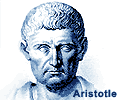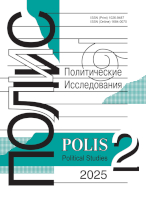Morphology and Casuality
Patzelt W.J.,
Ph.D., Professor of the Institute of Political Science at Dresden Technical University, Germany, werner.patzelt@tu-dresden.de
DOI: 10.17976/jpps/2015.03.04
Patzelt W.J. Morphology and Casuality. – Polis. Political Studies. 2015. No. 3. https://doi.org/10.17976/jpps/2015.03.04
In the article morphology is considered as a basic research program for general evolutionary theory that is a main approach to the explanation of any organized structures either historic, or existing today. The author explores the key morphological concepts that can be used in the analysis of multilayered causality and of different rhythms of development in biological, social and cultural reality. In particular, the meanings of such concepts as homology, homonomy, analogy, morphologic and other with their possibilities to biotic, cultural, institutional evolutionary processes are analysed. The author demonstrates the explanatory potential of the concepts of memes and memeplexes as a cultural forms (culturally coded patterns) that shape and reproduce reality, as well as provide transmission of cultural and social structures from one generation to another with some forms of variation. The author claims that the analysis of cultural tradition or the analysis of practical memetic reproduction can be performed through probability calculation method with three main criteria: structure’s location in a new generated structure, structure’s special quality and existence of transitional forms. The asymmetry of morphological architecture of any complex cultural structure is a key concept for studying (evolutionary) morphological dynamic. It allows to examine the character and possible direction of the evolutionary changes. The author also makes a point of Aristotle’s idea of four causes for the morphological analysis.
See also:
Editorial Introduction,
Introduction to the rubric. – Polis. Political Studies. 2015. No3
Inoguchi T.,
Political theory. – Polis. Political Studies. 2012. No3
Krasin Yu.A.,
Sociology, Political Science: Common Destiny, Common Troubles. – Polis. Political Studies. 2008. No5
Skalnik P.,
The state and the anthropologies of the state. – Polis. Political Studies. 2011. No6
Biberman Ye.,
Political science and the rules of causal inference. – Polis. Political Studies. 2009. No6





.jpg)






 print
print
.jpg)
.jpg)